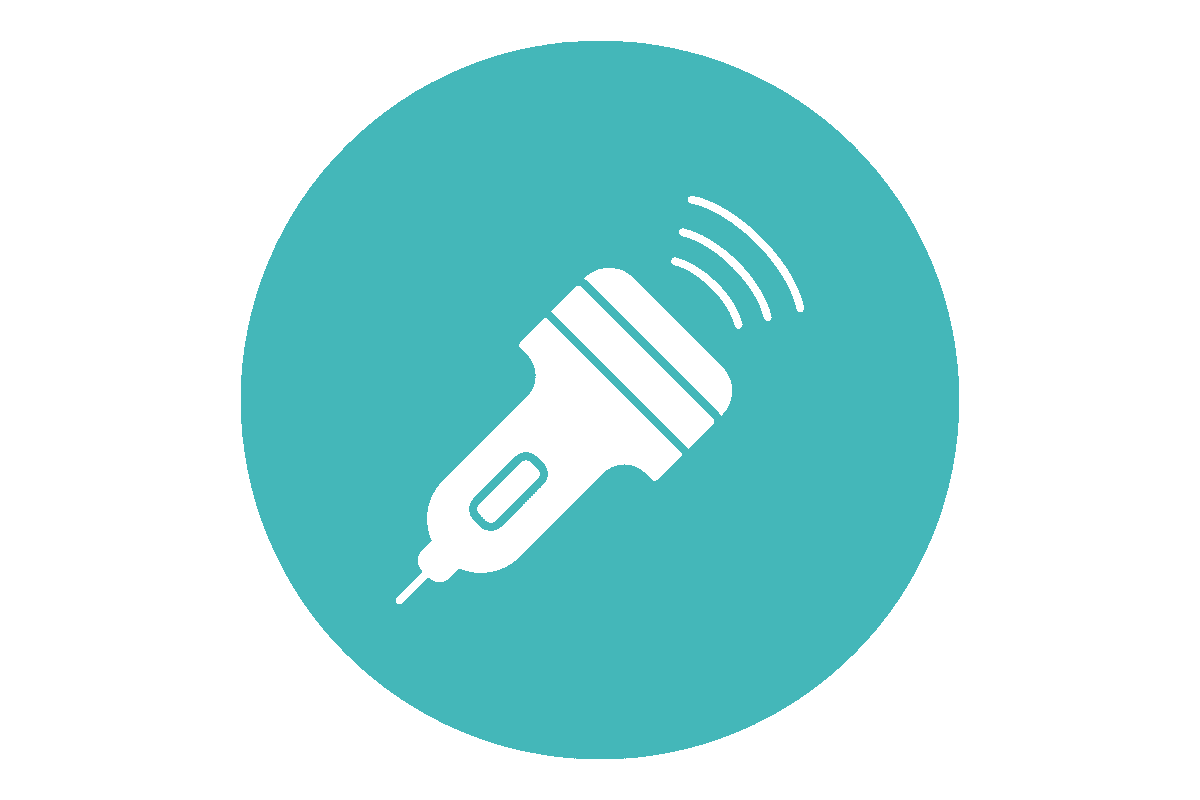
- Home 主頁
- About Us中心簡介
- HA公立醫院轉介
- FNA/Biopsy 抽取組織
- Health Info 健康資訊
- Contact Us 聯絡我們
- Doctor's Area 醫生專區
超聲波掃描
Ultrasound
超聲波可以穿透人體皮膚和組織,是一種高頻音波,沒有輻射的檢查,可以頻密監察身體變化。
Ultrasound is non-invasive and has no radiation.It can be frequently used to monitor our health conditions.
超聲波是甚麼?
What is a Ultrasound?

超聲波掃描原理及應用
Principles and Applications of Ultrasound
超聲波是一種高頻音波,成像原理不涉及X光,因此沒有輻射。超聲波在接觸到不同的器官及組織時會產生回音,透過專業儀器可以接收這些回音,並由電腦系統實時處理並組合成影像。透過這些影像,能有效分辨腫塊是實體還是水囊,以及評估器官有否發炎、結石或結構異常等情況。
超聲波掃描能實時檢視人體多個主要器官,例如胰臟、肝臟、腎臟、膽囊、子宮、卵巢和乳房等,有助於診斷相關器官的疾病。應用範圍廣泛,除了廣為人知的產前檢查,監測胎兒的健康及成長狀況外,也是常規身體檢查中的重要一環。
Principles and Applications of Ultrasound
Ultrasound is a type of high-frequency sound wave that does not involve X-rays in its imaging principle, so it does not emit radiation. When ultrasound waves come into contact with different organs and tissues, they produce echoes. These echoes can be received by specialized equipment, and a computer system processes and combines them in real time to create images. Through these images, it is possible to effectively distinguish whether a mass is solid or a cyst, as well as assess conditions such as inflammation, stones, or structural abnormalities in organs.
Ultrasound scanning allows real-time examination of several major organs in the body, including the pancreas, liver, kidneys, gallbladder, uterus, ovaries, and breasts, aiding in the diagnosis of diseases related to these organs. Its applications are extensive; in addition to the well-known prenatal examinations that monitor fetal health and growth, it is also an important part of routine physical check-ups.
上腹部超聲波檢查是甚麼?
上腹部超聲波能全面評估腹腔內多個核心器官的健康狀況,包括肝臟、膽囊、膽管、胰臟、脾臟及腎臟。有助於診斷多種常見都市病,例如:● 肝臟問題: 脂肪肝、肝硬化、肝臟水囊或腫瘤
● 膽道疾病: 膽囊結石(膽石)、膽囊瘜肉或膽管阻塞
● 胰臟及脾臟:結構異常
● 腎臟問題: 腎結石、腎臟水囊或腎積水
What is an Upper Abdominal Ultrasound Examination?
An upper abdominal ultrasound provides a comprehensive assessment of the health status of several core organs within the abdominal cavity, including the liver, gallbladder, bile ducts, pancreas, spleen, and kidneys. It aids in diagnosing various common urban diseases, such as:
- Liver Issues: Fatty liver, cirrhosis, liver cysts, or tumors
- Biliary Diseases: Gallstones, gallbladder polyps, or bile duct obstruction
- Pancreas and Spleen: Structural abnormalities
- Kidney Issues: Kidney stones, kidney cysts, or hydronephrosis
常見問題(FAQ)
Q1:超聲波檢查的費用是多少?
Q2:超聲波檢查安全嗎?有沒有副作用?
Q3.為何進行某些超聲波檢查前需要空腹或喝水?
各類超聲波檢查服務
Types of Ultrasound Examination Services
超聲波技術可以廣泛應用在身體多個部位的診斷:

乳房超聲波 Ultrasound Breasts
評估乳房腫塊,增生,分辨水囊或實體硬塊。
Evaluate breast lumps to distinguish between cysts or solid masses.

盆腔超聲波 Ultrasound Pelvis
檢查子宮、卵巢及膀胱等盆腔器官,評估子宮肌瘤、卵巢囊腫等常見婦科問題。
Examine pelvic organs such as the uterus, ovaries, and bladder to assess common gynecological issues like uterine fibroids and ovarian cysts.

肝臟+膽及膽管超聲波
Ultrasound Liver + Gallbladder + Biliary System(LGB)
專門評估肝臟、膽囊及膽管的狀況,有助診斷肝臟腫瘤、膽結石等問題。
Specialized assessment of the liver, gallbladder, and bile ducts helps diagnose issues like liver tumors and gallstones.

上腹部超聲波 (肝臟、膽、脾臟、胰臟及腎臟)
Ultrasound Upper Abdomen(LGB + Pancreas + Spleen + Kidneys)
評估上腹部多個主要器官,以篩查脂肪肝、結石、囊腫或腫瘤等病變。
Evaluate multiple major organs in the upper abdomen to screen for lesions such as fatty liver, stones, cysts, or tumors.

甲狀腺超聲波 Ultrasound Thyroid
評估甲狀腺的大小、形態及頸部腫塊的性質。
Assess the size and shape of the thyroid and the nature of neck masses.

前列腺及膀胱超聲波 Ultrasound Prostate + Bladder
檢查前列腺的大小、結構及有否異常增生,同時評估膀胱的健康狀況。
Examine the size and structure of the prostate for any abnormal enlargement, while also assessing the health of the bladder.
超聲波檢查之前的準備
Ultrasound Examination Process and Preparation
- 請在預約時間前30分鐘到達本診所
- 請攜同舊片﹑影像碟片或報告以作參考。
- 進行上腹,全腹或膽囊超聲波檢查前應保持空腹6小時。
- 進行盆腔,前列腺或膀胱超聲波檢查時,膀胱必需脹滿,請於檢查前最少飲用300ml清水。
- 放射師或醫生會在需要造影的部位上,塗上水溶性超聲波凝膠。
- 然後會使用超聲波探頭,在檢查範圍內進行滑動掃描。
- 整個過程無痛無創,一般需時約15至30分鐘,視掃部位而定。
- Please arrive 30 minutes before appointment time.
- Please bring the old films/ DVD/ medical report for reference.
- Please fast for 6 hours before the abdominal, gallbladder ultrasound examination.
- Ultrasound examination of pelvis, prostate or bladder requires a full bladder. Please drink around 300ml of water before the examination.




